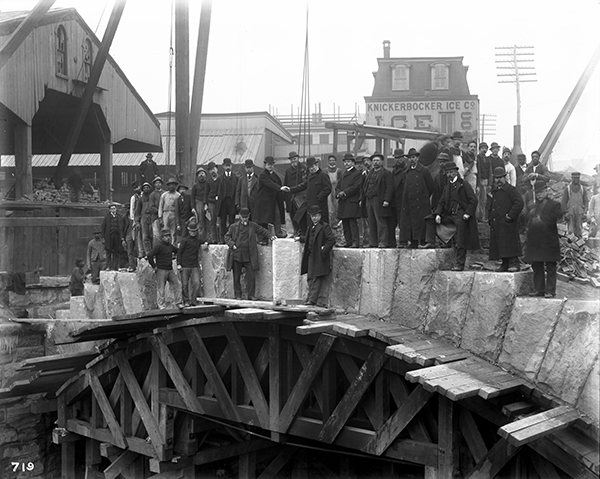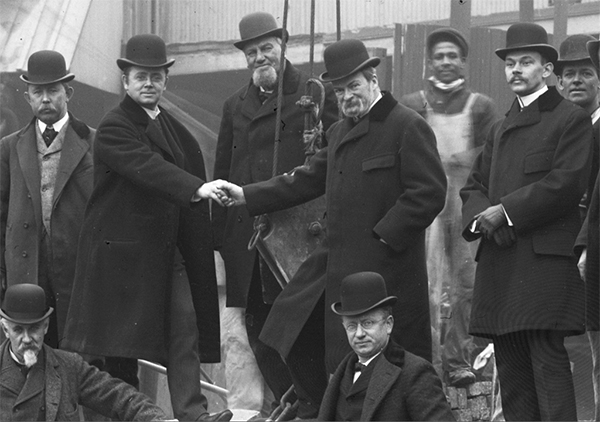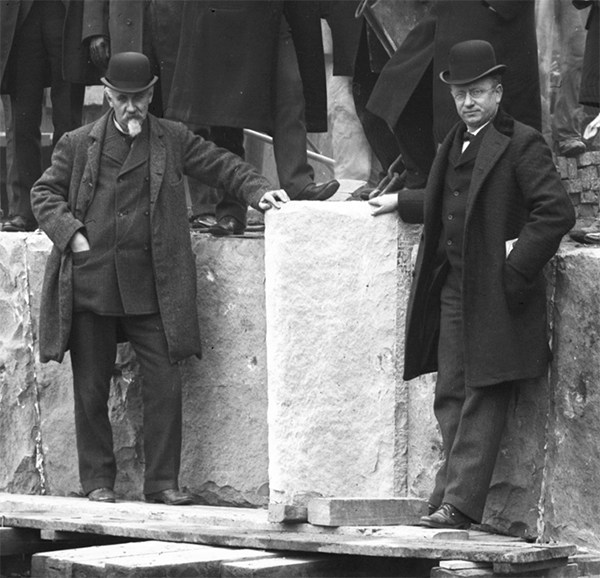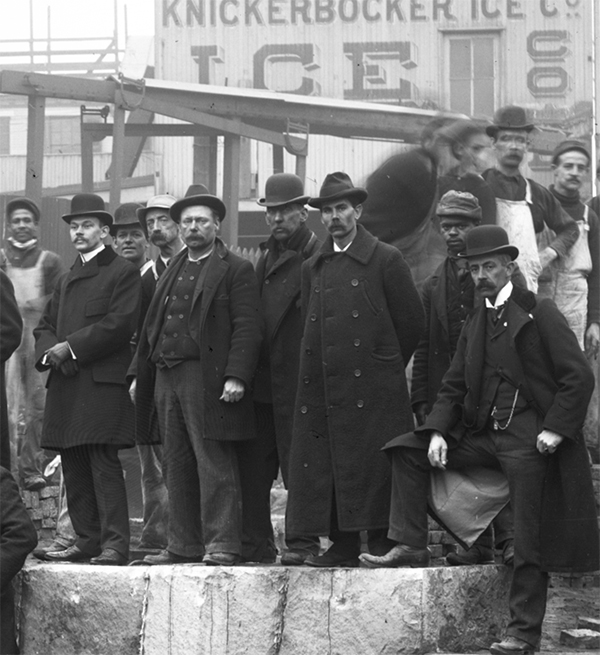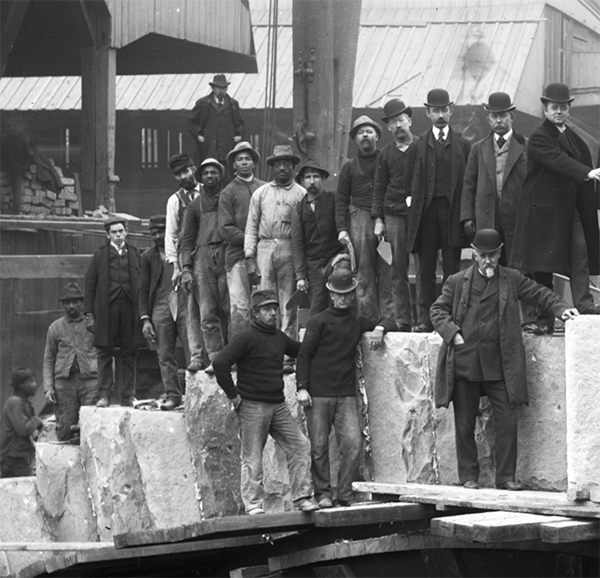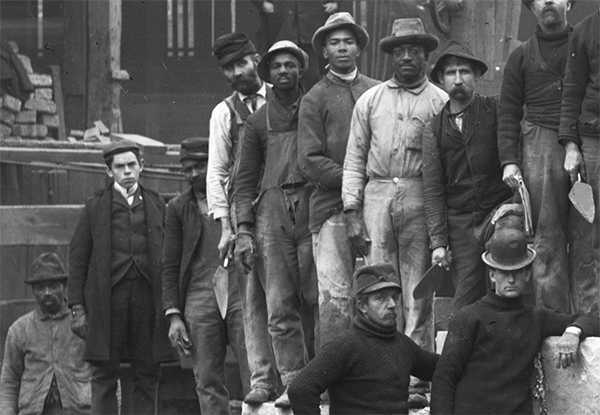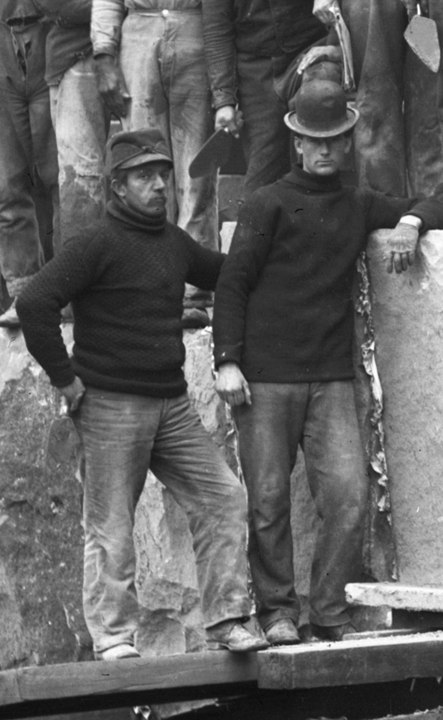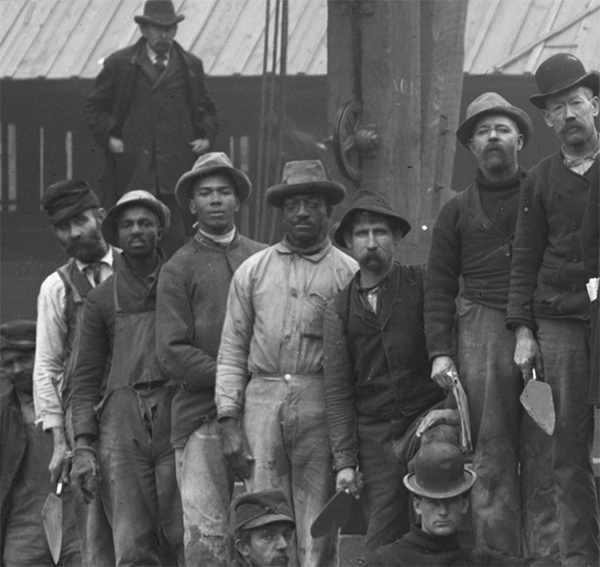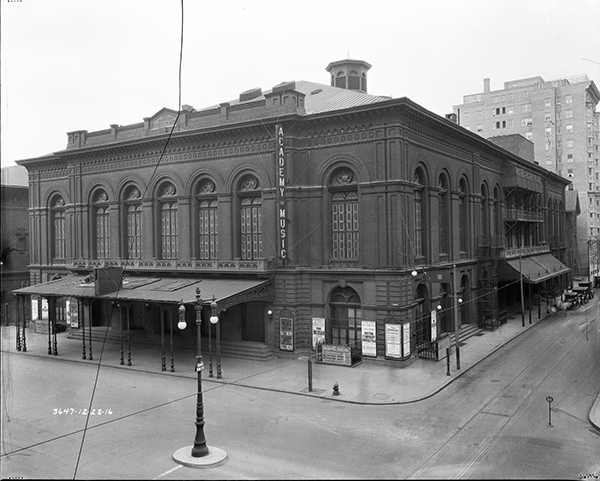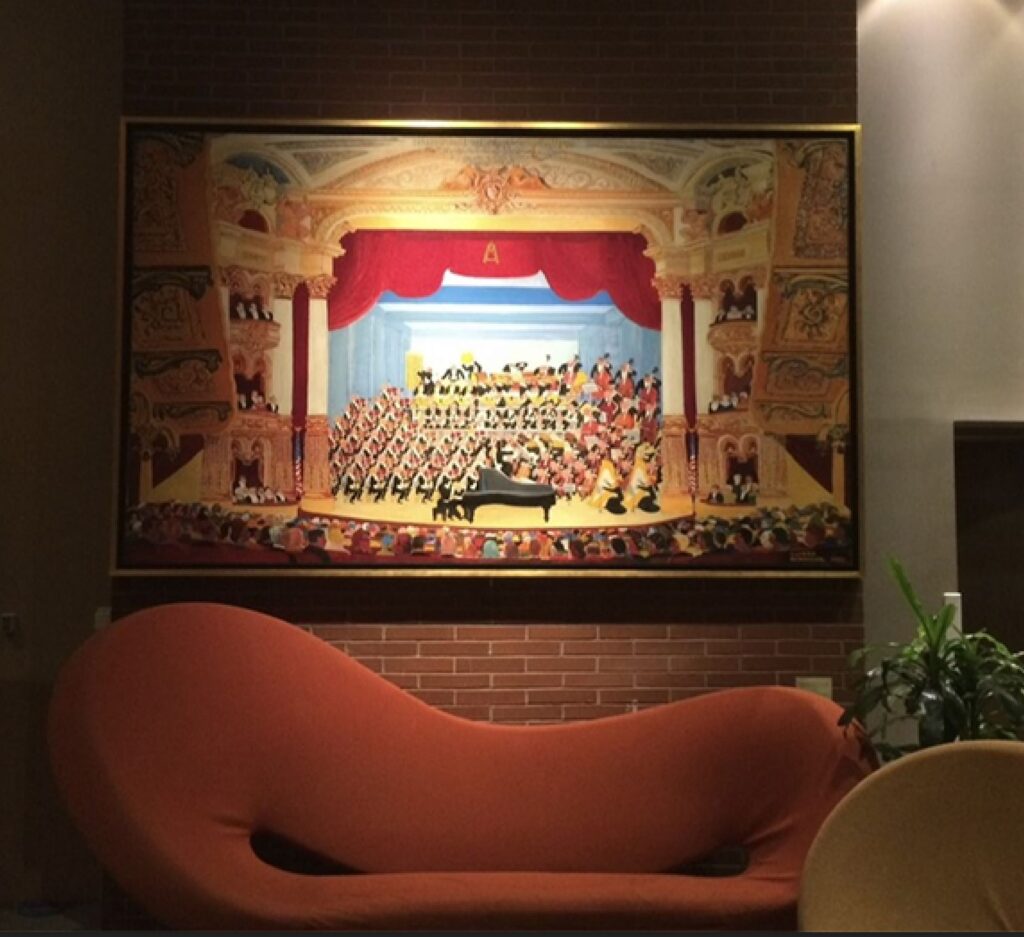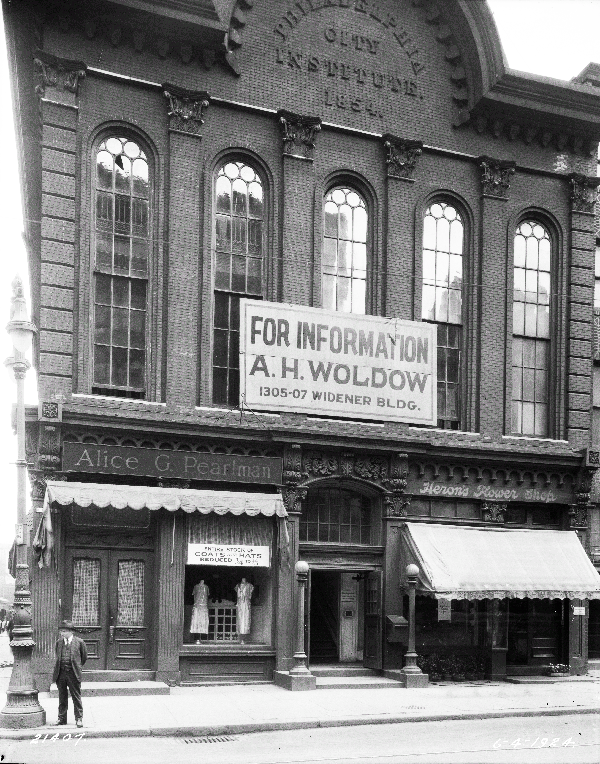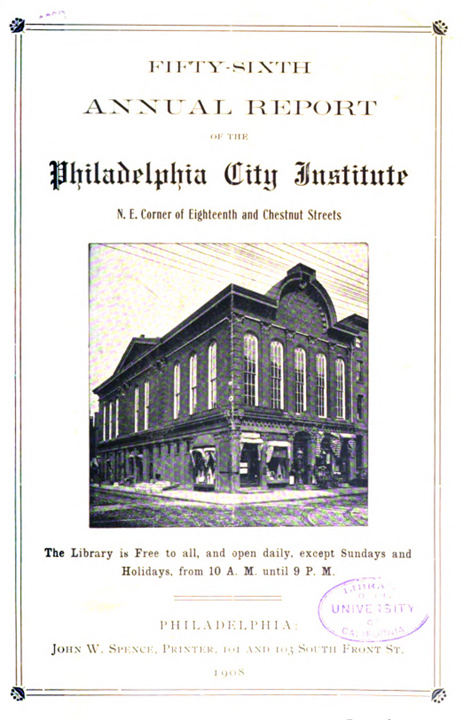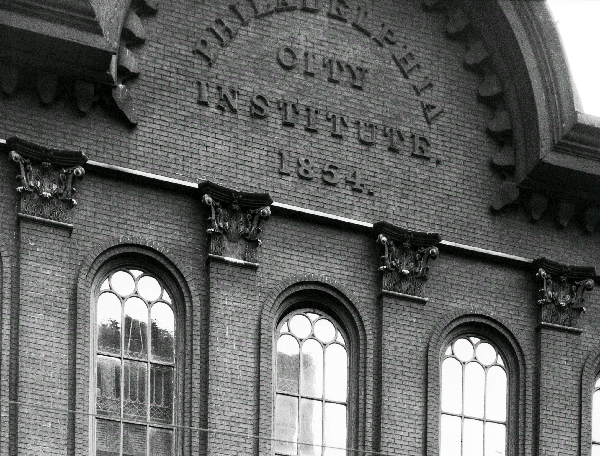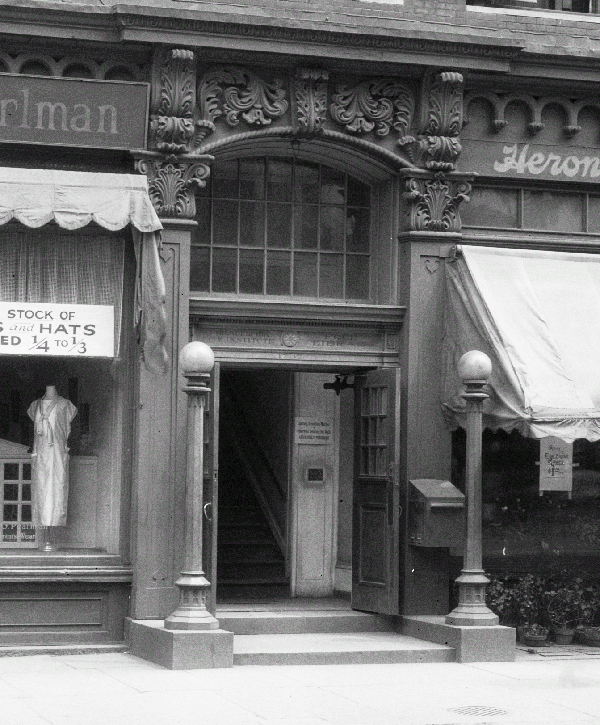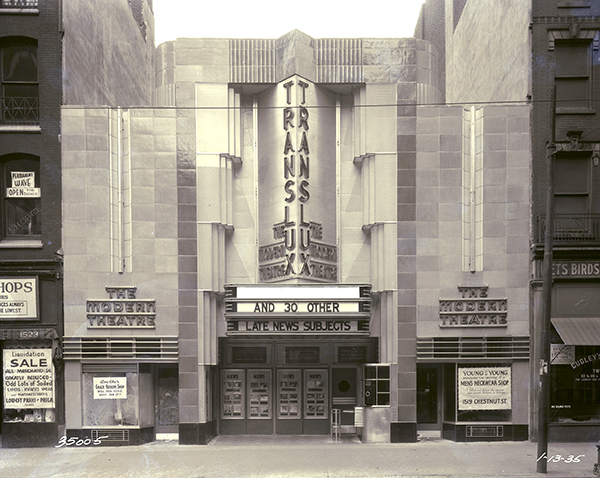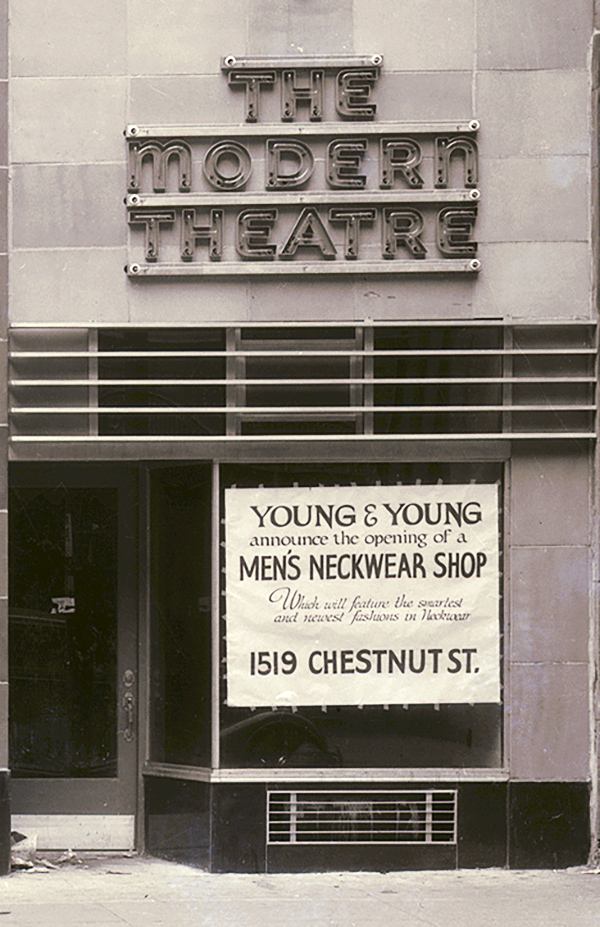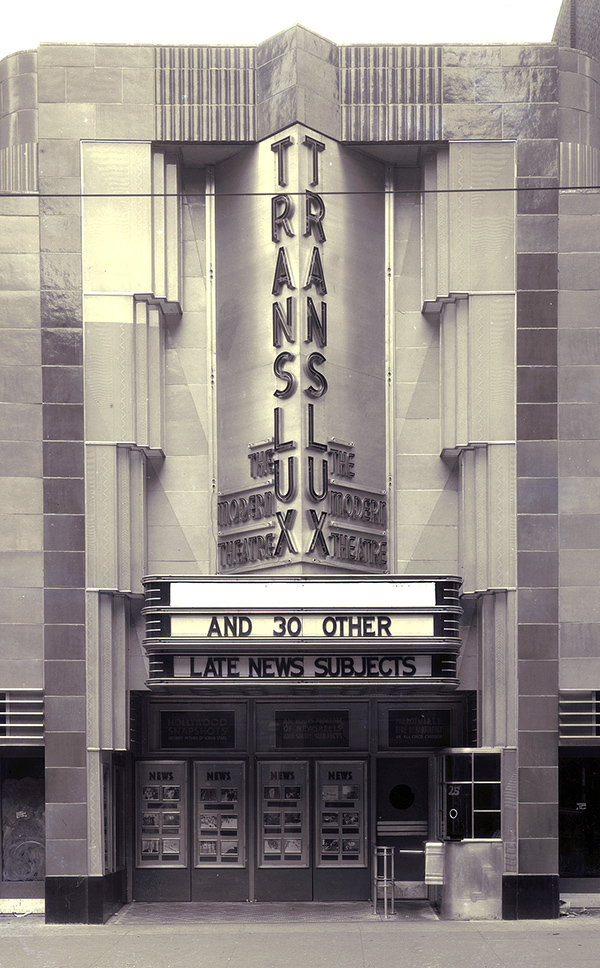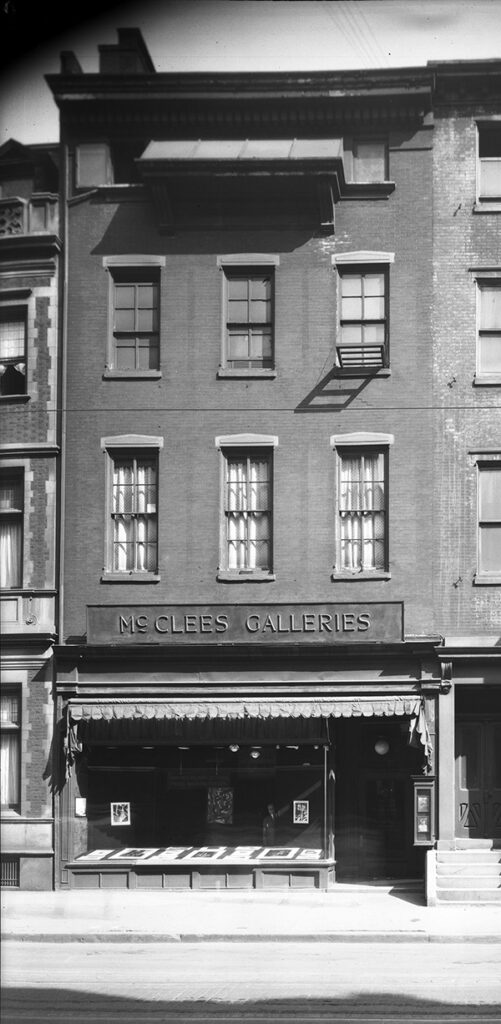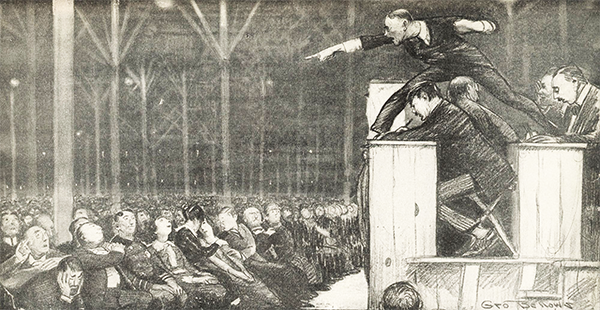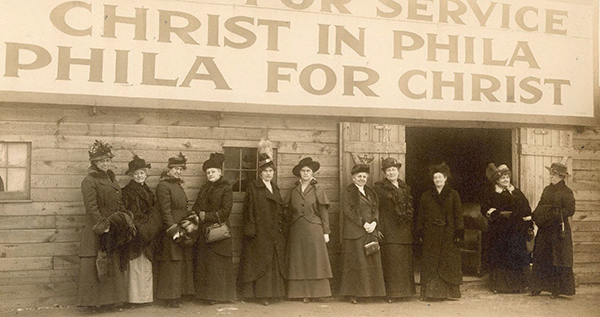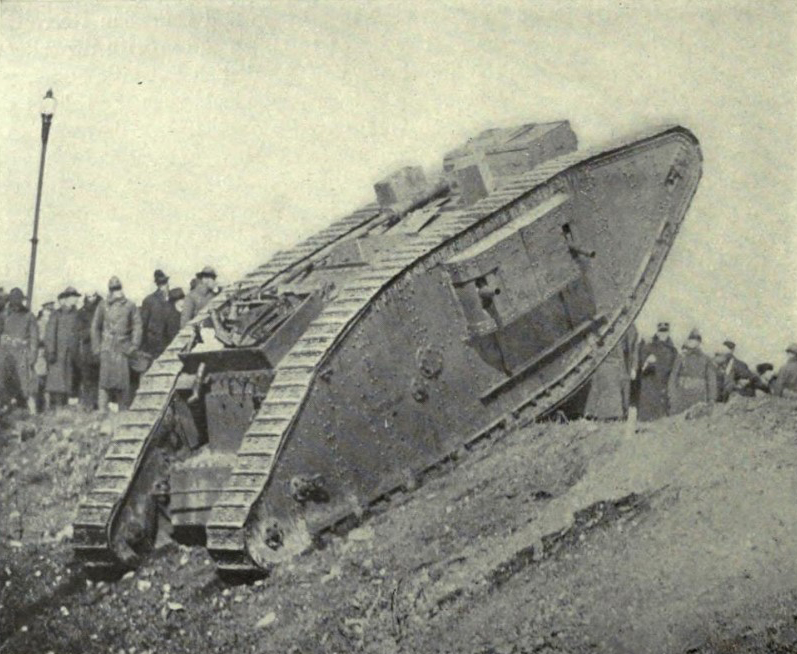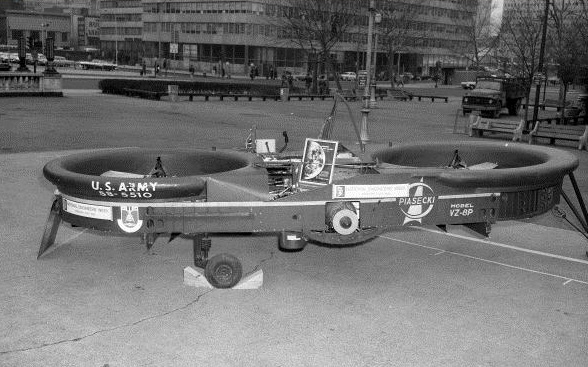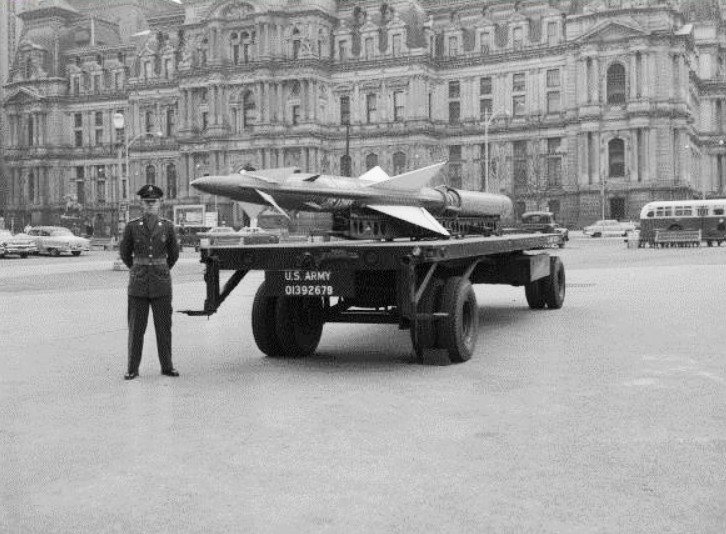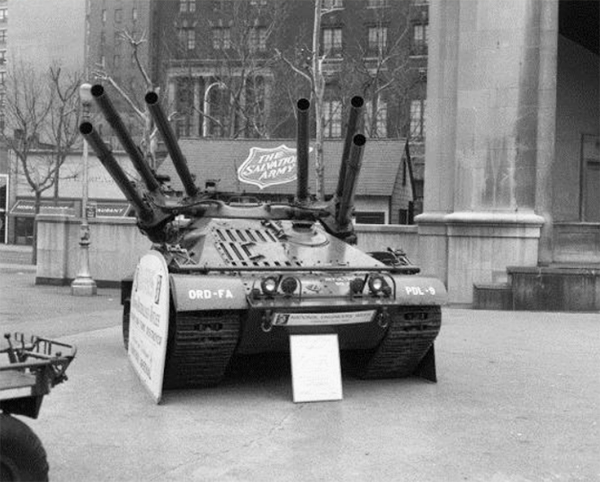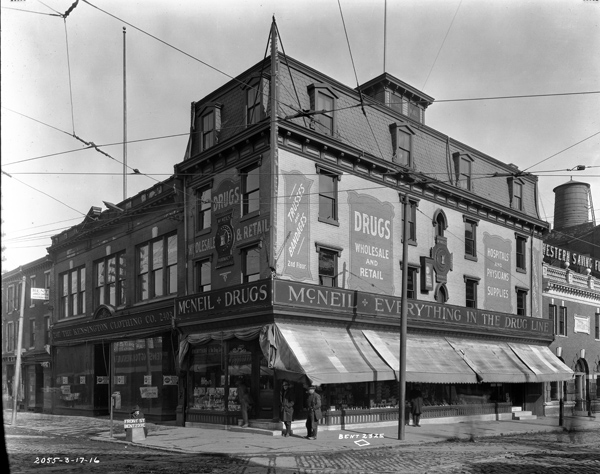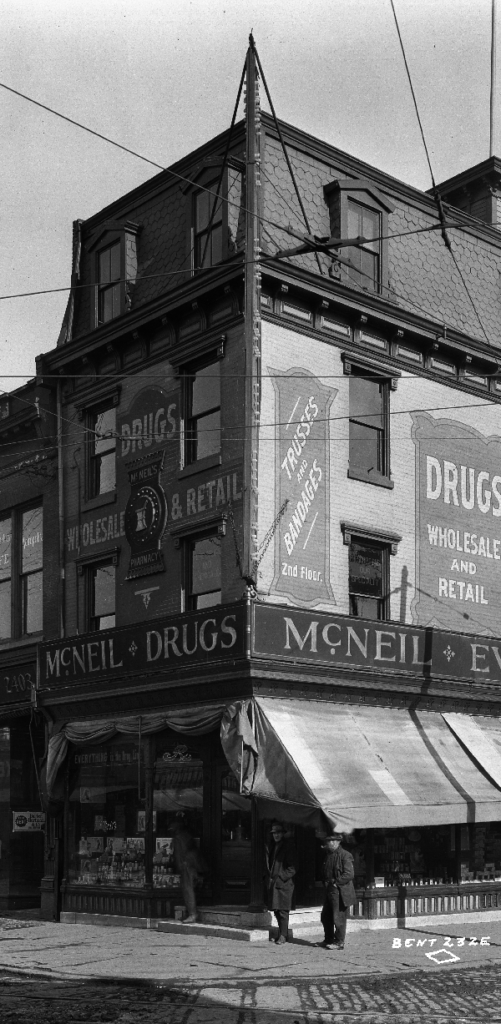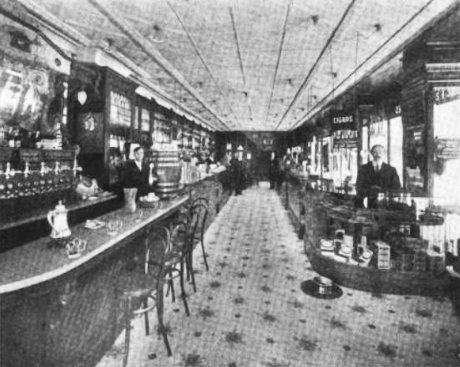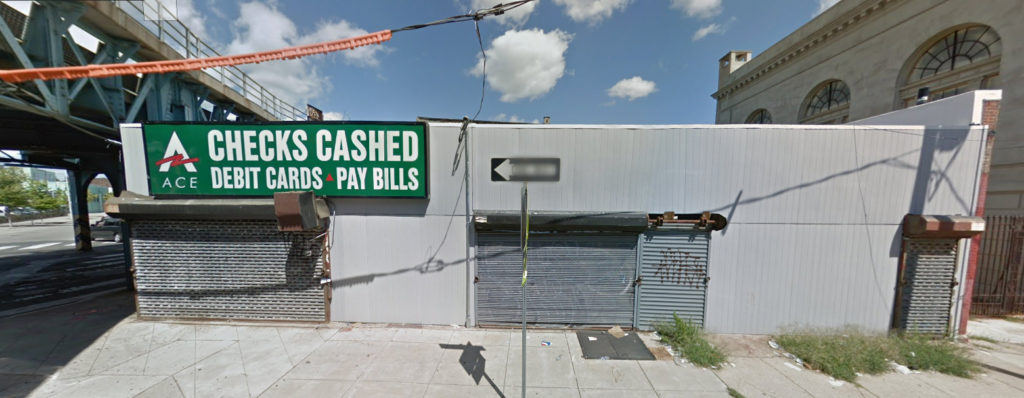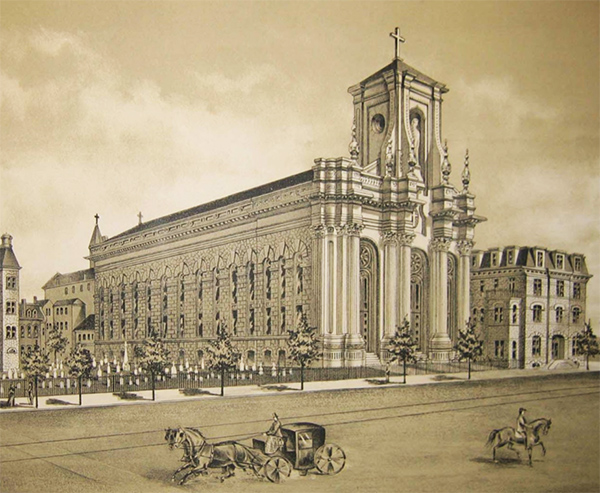Everyone in the ceremonial photo-op at the gigantic “Reading Depression” featured in our previous post at PhillyHistory knew handshakes could only go so far. The December 17, 1898 celebration was tainted by the knowledge of a recent death of a laborer. And that was hardly the first causality.
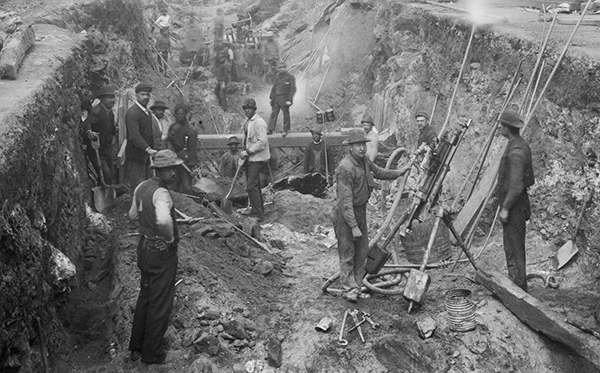
Michael O’Hearn, aged 38, and Benjamin F. Moore, 50, had been “working in a pit about 15 feet below the surface [at Pennsylvania Avenue, above 16th Street] when the supports which held the sides of the embankment gave away. The loose earth tumbled down on the men. All escaped, but O’Hearn and Moore, who were almost buried from view. The other workmen went to their aid at once, and succeeded in extricating them.” Both were taken to the Hahnemann Hospital. Moore would recover, but “O’Hearn became unconscious soon after his arrival at the hospital and died within an hour.”
We know of two other fatalities from a year earlier. And one, under the headline “Killed In The Subway” suggested even more, referring to an “already long list of fatalities in connection with the construction of the Reading subway.”
James Last died in a gruesome accident in July 1897. This father of several small children, “a laborer, in the employee of contractors E. D. Smith & Co., met a terrible death in falling headfirst into a trench . . . at Twenty-third and Pennsylvania Avenue.”
Attempting to avoid a collapse at the edge of a trench where he was working, “Last dropped his hoe. . . and ran rapidly along the side, picking his way as well as he could among the loose timbers.” His “foot must have tripped over one of those obstacles, for suddenly he literally dived over the side of the trench and went headlong down to the bottom. In an instant the cry: ‘Man hurt’ went up, and hundreds of people crowded to the edge of the trench. Lanterns were brought out, and covered with blood, the body of the unfortunate man was found. Last’s head was bent under his body and his arms hung limply by his side.” His skull was fractured in two places. Last’s arms were broken and, due to a too-hurried recovery in a construction bucket, his legs “were badly torn and mangled.”
Last never regained consciousness and died minutes after admission to a nearby hospital.
Five weeks later the Reading Depression claimed yet another life, that of Fortunato DiCola, 37, of 7th and Fitzwater Streets. DiCola met his fate at 21st and Hamilton Streets.
Di Cola and Sabidino Felli were using a derrick and a boom to remove large rocks. One “had just been loosened in the pit thirty feet below” when “the men were raising the boom slightly, in order that a chain might be passed beneath it. Suddenly the large hook which help up the end of the boom broke, and the heavy timber fell over on the bank, where the men were standing. It struck Di Cola on the head, crushing his skull,” and also injuring Felli,” who survived.
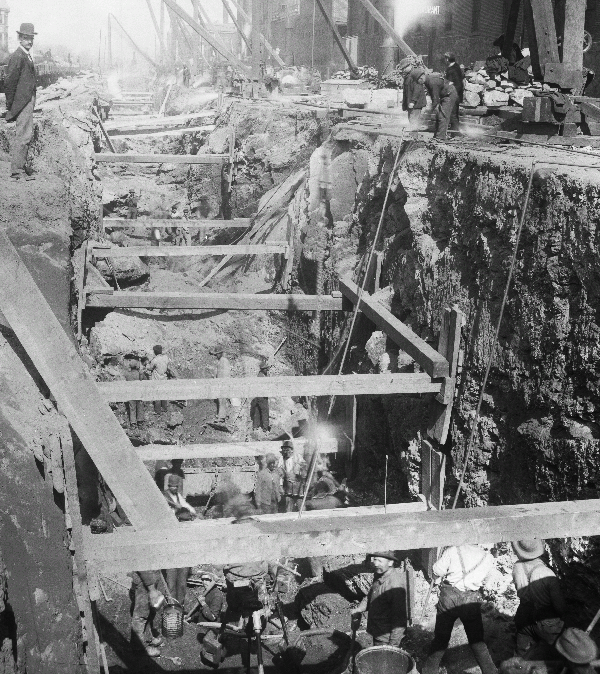
How many other laborers were killed and injured over the course of three years at this gigantic infrastructure project? Only research will enable us to build a comprehensive, accurate list of casualties. And how would we like to memorialize these victims on the streets of Fairmount? Or would we prefer to chalk up these fatal incidents as unavoidable, inevitable costs of urban development in Philadelphia’s Gilded Age?
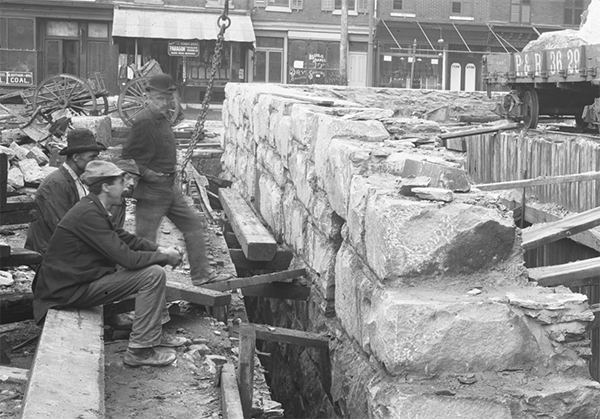
Sources: From the The Philadelphia Inquirer: “Killed in the Subway, James Last, a Workman, Meets a Terrible Death, July 8, 1897; “Death on Subway, Another Workman Meets with Fatal Accident,” August 13, 1897; “Another Subway Fatality, Michael O’Hearn, Injured by a Cave-in, Dies in the Hospital” December 11, 1898.]

